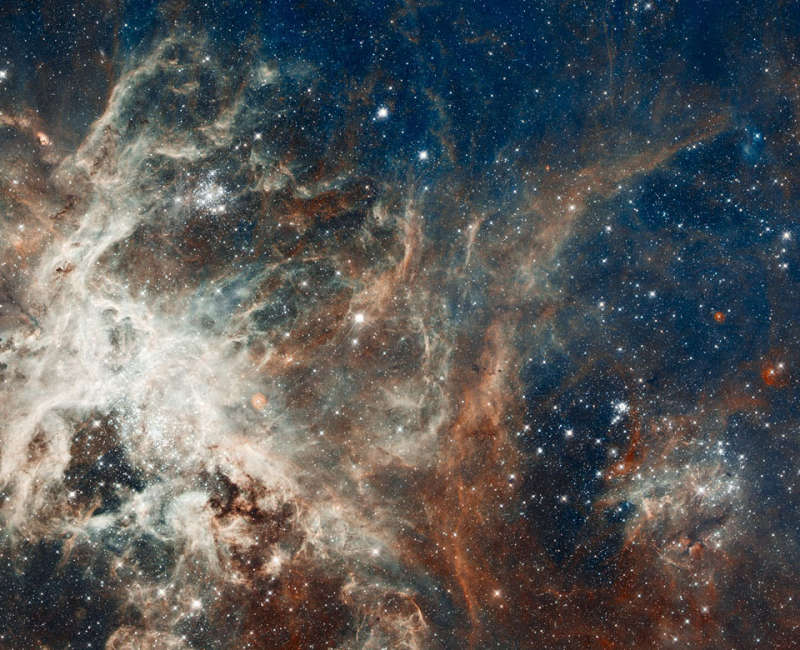
|
Credit & Copyright: NASA,
ESA,
ESO,
D. Lennon
(ESA/STScI)
et al.,
and the Hubble Heritage Team (STScI/AURA)
Explanation:
The largest, most violent star forming region known in the whole
Local Group of galaxies
lies in our neighboring galaxy the
Large Magellanic Cloud (LMC).
Were the Tarantula Nebula at the distance of the
Orion Nebula -- a local star forming region --
it would take up fully half the sky.
Also called
30 Doradus, the red and pink
gas indicates a massive
emission nebula, although
supernova remnants and
dark nebula also exist there.
The bright knot of stars
left of center
is called R136 and contains many of the most
massive, hottest, and brightest stars known.
The
above image is one of the
largest mosaics ever created by
observations of the
Hubble Space Telescope and has
revealed unprecedented details of this enigmatic star forming region.
The image is being released
to celebrate the
22nd anniversary
of Hubble's launch.
Astronomy Seminar of the Week:
The Great Debate, Part I
|
January February March April May June July August September October November December |
| ||||||||||||||||||||||||||||||||||||||||||||||||
NASA Web Site Statements, Warnings, and Disclaimers
NASA Official: Jay Norris. Specific rights apply.
A service of: LHEA at NASA / GSFC
& Michigan Tech. U.
Based on Astronomy Picture
Of the Day
Publications with keywords: Tarantula Nebula - star formation - LMC
Publications with words: Tarantula Nebula - star formation - LMC
See also:
- APOD: 2025 December 28 Á NGC 1898: Globular Cluster in the Large Magellanic Cloud
- NGC 253: Dusty Island Universe
- APOD: 2025 October 26 Á Halloween and the Ghost Head Nebula
- APOD: 2025 October 21 Á IC 1805: The Heart Nebula
- Young Suns of NGC 7129
- APOD: 2025 December 9 Á The Heart of the Soul Nebula
- APOD: 2025 July 10 Á Lynds Dark Nebula 1251
